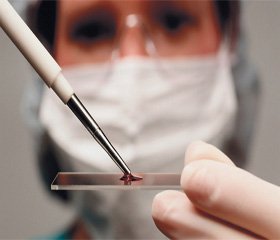Журнал «Здоровье ребенка» 6 (49) 2013
Вернуться к номеру
Glial protein s100 and total nitric oxide blood level indexes features in small premature infants with perinatal hypoxic-ischaemic encephalopathy
Авторы: Benis N. A., Samsonova T. V., Nazarov S. B., Kuz’menko G. N., Popova I. G. - FSBI “Ivanovo scientific-research institute named after V. N. Gorodkov” Ministry of Health Russian Federation
Рубрики: Семейная медицина/Терапия, Педиатрия/Неонатология
Разделы: Клинические исследования
Версия для печати
The frequency of preterm birth of infants with extreme and very low birth weight has remained stable in the last decade and ranges from 5% to 12% of the total number of births. Perinatal hypoxic ischemic encephalopathy of these children makes up from 50% to 80%. It is actual to determine the particular features of the specific brain tissue proteins and total nitric oxide blood levels of small premature infants with perinatal hypoxic ischemic encephalopathy.
Materials and methods. Complex clinical and laboratory examination of 92 children during the first year of life was performed. The main group included 70 small premature infants with perinatal hypoxic ischemic encephalopathy and gestational age at birth of 25-32 weeks, the comparison group included 22 healthy full-term infants of the first year of life, who had no abnormalities in the nervous system. Formation of subgroups within the main group carried out on two terms: the degree of hypoxic ischemic encephalopathy and the gestation age at the birth. Two subgroups were formed depending on degree of hypoxic ischemic encephalopathy: the I subgroup (n=44) consisted of children with moderate hypoxic ischemic encephalopathy (MHIE), the II subgroup (n=26) included children with severe hypoxic ischemic encephalopathy (SHIE). According to the gestational age (GA) at the birth small premature infants were divided into two subgroups: the 1 subgroup (n=24) included children with GA at the birth less than 28 weeks, the 2nd subgroup (n=46) – children with GA at the birth of 28-32 weeks. S100 protein level research was conducted on a tablet photometer the EL808 "Ultra Microplate Readers" by the immunoenzyme analysis method with the sets of "CanAg S100 EIA" (USA). The level of total nitric oxide was determined by the M. Katrina method (2001), which included the restoration of nitrates to nitrites with vanadium chloride presence. Clinical and biochemical examinations were conducted at 3-5 days, at the age of 1 month and at post-conceptual age (PCA) 38-40 and 44-46 weeks.
Results and discussion. It was established that the S100 protein serum level of the main group was smaller than in comparison group for 3-5 days of life (р<0,001). Its concentration in serum remained smaller in group of preterm infants than in comparison group to PCA of 38-40 weeks (р<0,001). It was determined that the S100 protein serum level of children with severe hypoxic-ischaemic encephalopathy was higher than of children with moderate hypoxic-ischaemic encephalopathy (р<0,05). At the age of 1 month the significant decrease of this index was revealed in the II subgroup of patients in comparison with the indexes of 3-5 days of life (р <0,05). The S100 protein serum level of children with SHIE was smaller than of children with MHIE to PCA of 44-46 weeks (р<0,05). The diagnostic significance of the glial protein for the severity hypoxic-ischemic encephalopathy assessing in the early neonatal period was proved. This index allows to diagnose the moderate hypoxic ischaemic encephalopathy of small premature infants for 3-5 days of life with sensitivity of 87,5%, specificity of 91,7%.
It was determined that the total nitric oxide serum level of preterm infants were higher than in comparison group for 3-5 days (p<0,001). Its level remained higher in main group children on PCA 38-40 weeks than in comparison group (p<0,001). The significant difference in the data for 3-5 days of life in subgroups of children with severe and moderate hypoxic ischaemic encephalopathy wasn’t revealed. The NOx serum level decreased by the end of the first month in the main group children in comparison with the indexes in the early neonatal period (р<0,01). The NOx serum level raised in comparison with the index at 1 month in the main group to PCA of 44-46 weeks (р<0,05). The NOx serum level in PKV 38-40 and 44-46 weeks of children with severe hypoxic ischaemic encephalopathy was higher, than of children with moderate hypoxic ischaemic encephalopathy (р<0,05 and р<0,05).
The significant difference in indexes of NOx serum level depending on gestational age at the birth was established only in PCA 38-40 and 44-46 weeks: the NOx serum level of children with gestational age at the birth less than 28 weeks was higher than of children with gestation of 28-32 weeks (р<0,01 and р<0,05).
Conclusions. The interconnection between the protein S100 and total nitric oxide blood levels variation and the severity of hypoxic ischemic encephalopathy and gestational age of small premature infants was established. The diagnostic significance of the glial protein for the severity hypoxic-ischemic encephalopathy assessing in the early neonatal period was proved.

